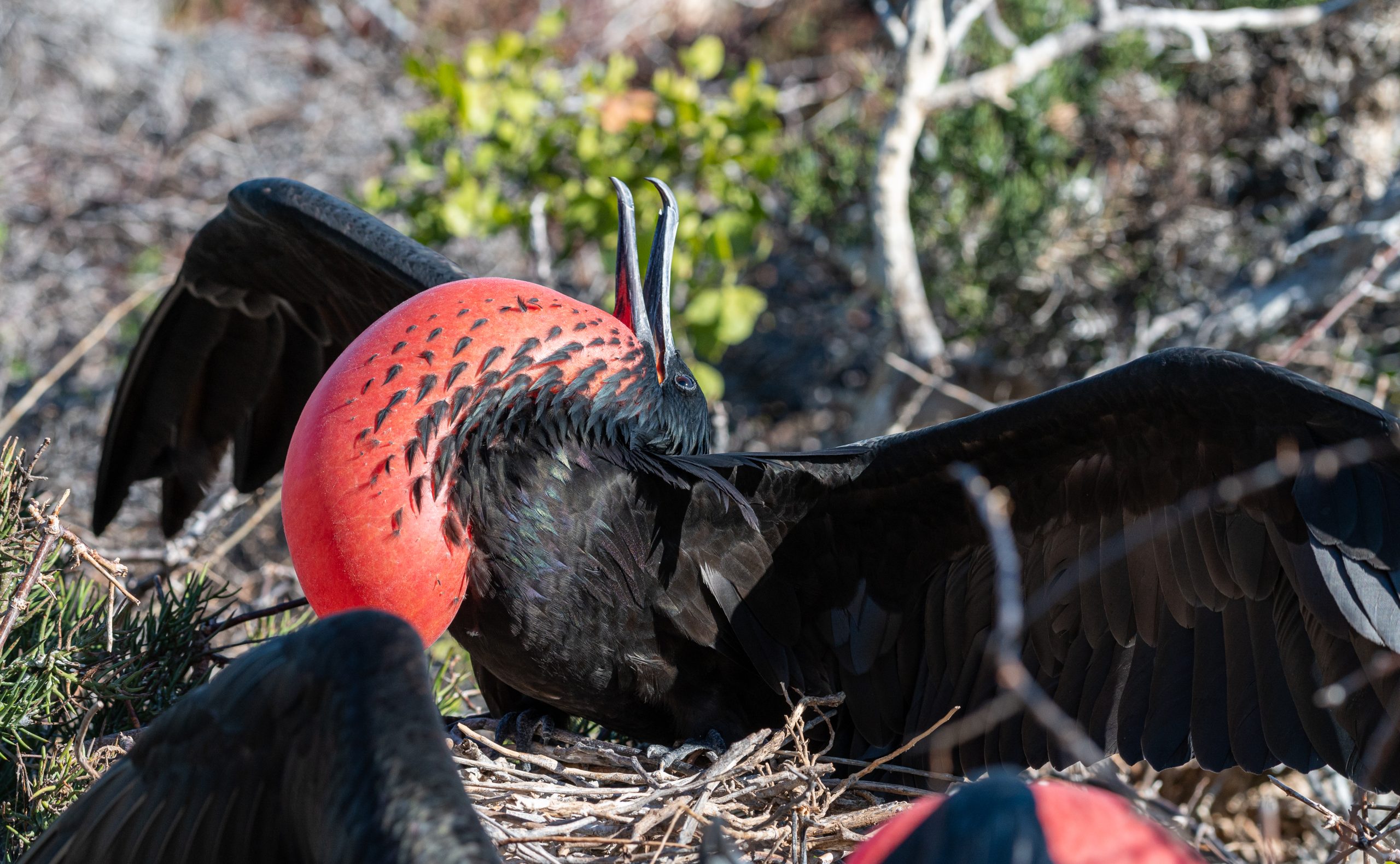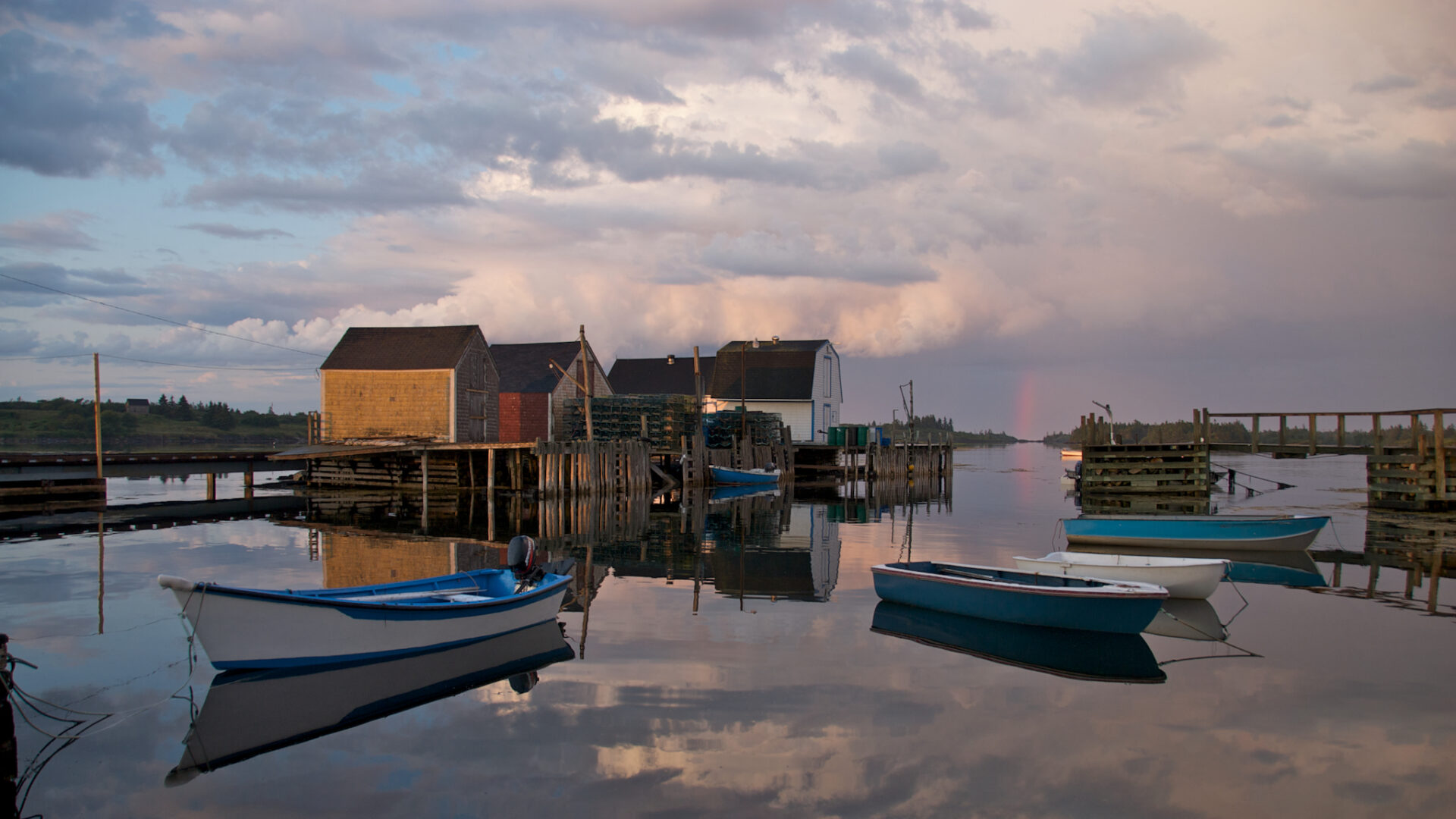
Day 1 of our Galapagos adventure began with a 3 am wake up call for the hour-long van ride from downtown Quito to the airport to catch the first flight of the morning to the islands. Ecuador must have studied Denver when deciding where to build their new airport – as far away from town as possible. Though a short flight “as the crow flies”, these flights stop in Guayaquil, which adds an extra 2 hours +/- onto the trip (you’ve been warned). Still, we arrived on Isla Baltra by late morning, after which were quickly whisked by bus to the harbor and loaded onto the Tip Top IV, our home for the next 2 weeks.

After a quick lunch and unpacking it was a very short, few mile ride to the first stop: North Seymour Island. I wish I had known in advance that we’d alight onto one of the more bird intensive islands right out of the gate. There were birds everywhere. Flying. Walking. Perching. Nesting. Baby birds. Adult birds. On the path. Off the path. Overhead. Underground (probably). In the trees. Behind the rocks. It was overwhelming. Even with 3 cups of coffee and the adrenaline of being in the Galapagos surrounded by amazing wildlife my brain couldn’t decide where to focus. Still bleary eyed from the early flight, and a bit rusty with the camera, I was not on my game, and the photos from that morning show the rust. So, word of advice:
North Seymour has a lot of birds. They’re everywhere. Be ready.
-Bleary eyed photographer
This was a “dry landing”, which simply means the boat driver points the bow of the boat into a rock and hits the throttle as the tourists climb ashore. We landed at the left arrow in the picture above, then turned right, and we quickly came upon this blue-footed booby and a chick.





The parent booby stood up and flapped its wings a few times, which made for a nice picture. Pictures of animals that are just sitting there gets old real fast. I was somehow awake enough to zoom out and make sure the wings weren’t totally clipped. Yay me.
Just a few steps away we watched a parent booby feed its chick. Whenever you’re around a bunch of bird photographers, and the feeding happens, you’ll be inundated with the cacophonous sounds of a dozen shutters all clicking as quickly as possible for the next 20 seconds, in the distant hope you’ll catch – well, I’m not sure what! A bit of the regurgitated herring? Of all the bird feeding photos I took on this trip, these very first ones I think are my favorite, as they show the gross messiness involved. The actual beak in beak feeding, further down, is much less interesting.




Galapagos is home to 2 types of frigate birds: the great frigate bird and the magnificent frigatebird. The great frigatebird has a green sheen on the feathers (green = great), and the magnificent frigatebird has a purple sheen, as shown below. This island, North Seymour, had only magnificent frigates; we’d see greats tomorrow.


Down around the corner, near the second arrow and the “B” in basalt in the map above, we found a number of male frigatebirds in full display, their bright red throat pouch fully puffed out. This was one of those ‘must have’ Galapagos shots to prove you were in the Galapagos. If you don’t have it, you weren’t there. Sorry, I don’t make the rules. I wasn’t feeling confident, so I tried a number of different angles, depth of field, and orientations. Whenever a female frigatebird flew overhead the courting males would perk straight up, puff their pouch out, and make a clacking noise to attract the females. I messed up a little bit on clipping the wings, but was very happy to get the interaction. My favorites are the side angle shots (top left in gallery below), which shows the profile of the pouch and catches the eye looking straight up, beak at attention. My second favorite is middle left, catching the eye in focus as the bird looks away from me. I have similar pictures from my puffin adventure, and I’ve always liked this type of animal portrait. My photographer pride swelled a tiny bit when Tui, during an evening lecture, pointed out that she also likes to frame shots like this. A little while later, about halfway around the loop, we found another batch of puffed up frigates, and I include a few of those below.
Frigatebirds are obviously pretty neat to look at when the males are on display, but even on their best day they look like gussied up vultures. Without the pouch they’re not terribly photogenic. And they’re really, really mean, including to other frigatebirds, and particularly to baby sea turtles – as we’d unfortunately witness first hand a few days later. RIP little guy.
Juvenile frigatebirds, if you can get past the razor sharp hooked beak on the very hungry chick that is staring you down, no doubt thinking “I could definitely peck that human’s eyes out,” have their own charm. They are covered in rather long, wispy fuzz that blows in the wind in a way that reminded me very much of Boris Johnson. One chick below helpfully opened their mouth fully, to show me they had room to swallow my eyeballs, in the process showing an otherworldly looking inside of their beak. Click below – it’s wild.






The next stop was a beautifully lit up blue-footed booby and chick, and the group spent quite a bit of time there. I set up initially right where we walked up, and as you can see from the first few photos the birds were a bit backlit by the late afternoon sun. But the parent fed the chick, so of course I had to fire off 100 shots (still not knowing what I was expecting to capture). Although not perfectly lit, the angle wasn’t too bad, although I wished I was a bit lower (you generally want to be eye level). The red plants made for nice contrast against the circle of bird poop that defines the nest. I moved up and around where the lighting was better, and where Tui and one of the other photographers had set up, with the sun hitting the left side of the boobys (bottom few pictures). But we ended up looking down a slight slope, as you can see in the bottom left picture of one of my fellow photographers trying to get the shot, which made the angle less than ideal. My favorite of the bunch is at lower right, where parent booby tilted their head up a bit and gave me the side eye.
This lizard (below left) caused a major photographer ruckus when it was spotted eating a grasshopper. I was too tired to enter the fray and try and get a decent picture – I mean, it’s a lizard. Which I think means I don’t have the wildlife photographer gene and should stick to my day job. That said…. I did of course take a picture of the lizard eating the grasshopper (but I’m not proud of it). And at least 2 other lizards. We’d see these little guys, or some version of them, on almost every island.
The sun was going down and we had to be off the island by 6 pm, so walked down to the dry landing spot, climbed aboard the panga, and tried to process the unexpectedly overwhelming first afternoon on the Galapagos islands. Day 2 was possibly even more overwhelming, and involved our first of many snorkels.
Link to Day 1 Smugmug gallery (lots more pictures!) or onward to Day 2.























